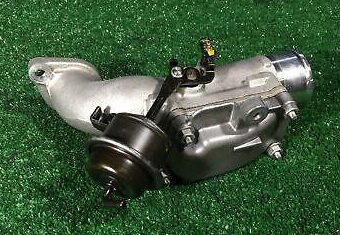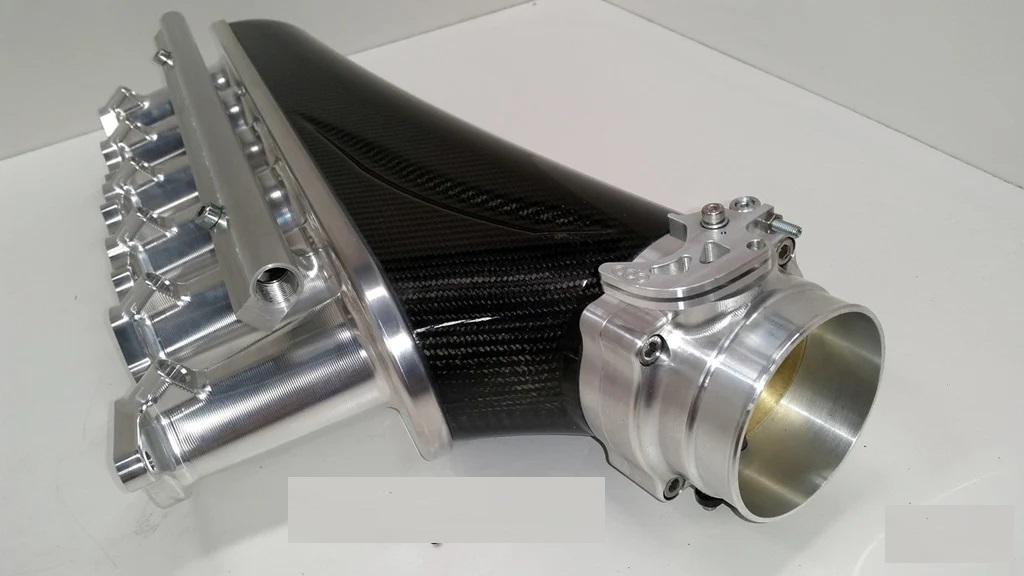Intake Air Control Valve: Diagnosing and Repairing Issues
The intake air control valve (IACV) is a crucial component in managing the idle speed and overall air intake of your 2JZ-GTE engine. A malfunctioning IACV can lead to various issues, including rough idling, stalling, and poor performance. For 2JZ-GTE engine enthusiasts, understanding how to diagnose and repair IACV issues is essential for maintaining optimal engine performance.
In this guide, we will explore the importance of the intake air control valve, provide detailed steps for diagnosing and repairing common IACV issues, and explain how to interpret the results. By following these steps, you can ensure your engine remains in peak condition and address any IACV-related problems promptly.
Understanding the Intake Air Control Valve
The intake air control valve regulates the amount of air entering the engine during idle, ensuring smooth operation and proper fuel combustion. It works in conjunction with the ECM (Engine Control Module) to maintain the desired idle speed.
Functions of the Intake Air Control Valve in the 2JZ-GTE Engine:
- Idle Speed Control: Regulates air intake to maintain a stable idle speed.
- Cold Start Management: Adjusts air intake during cold starts to improve engine warm-up.
- Overall Air Intake Regulation: Ensures the right amount of air is mixed with fuel for optimal combustion.
Understanding the functions of the IACV helps in diagnosing issues and maintaining engine performance.
Common Procedures for Diagnosing IACV Issues
Diagnosing IACV issues involves specific procedures to identify and resolve problems affecting the valve’s performance. Here are some common procedures:
- Visual Inspection:
- Steps:
- Ensure the engine is off and the key is removed from the ignition.
- Locate the IACV, typically attached to the throttle body.
- Inspect the IACV and its connections for signs of damage, corrosion, or debris.
- Ensure the IACV connector is securely attached.
- Testing the IACV:
- Steps:
- Use a multimeter to check the resistance of the IACV. Refer to the service manual for the specific resistance values.
- If the resistance is outside the specified range, the IACV may be faulty.
- Apply direct voltage to the IACV to observe its operation. The valve should move smoothly without any sticking.
- Cleaning the IACV:
- Steps:
- Remove the IACV from the throttle body.
- Use a throttle body cleaner to clean the IACV and the throttle body passage.
- Reinstall the IACV and ensure all connections are secure.
- Checking for Vacuum Leaks:
- Steps:
- Inspect the vacuum lines connected to the IACV for any leaks or damage.
- Use a vacuum gauge to test for proper vacuum levels.
- Repair or replace any damaged vacuum lines.
Diagnostic Trouble Codes (DTCs) Related to IACV Issues:
- P0505: Idle Control System Malfunction
- P0506: Idle Control System RPM Lower Than Expected
- P0507: Idle Control System RPM Higher Than Expected
Understanding these procedures helps in accurately diagnosing IACV issues, ensuring effective repairs.
Diagnostic Tools and Techniques
Effective diagnosis and repair of IACV issues require the right tools and techniques. Here is a step-by-step guide to diagnosing and repairing IACV issues:
Tools Required:
- Multimeter: For measuring resistance and continuity.
- OBD-II Scanner: For reading diagnostic trouble codes.
- Throttle Body Cleaner: For cleaning the IACV and throttle body.
- Vacuum Gauge: For checking vacuum levels.
- Service Manual: For specific diagnostic procedures and specifications.
Step-by-Step Guide:
- Preparation:
- Ensure the engine is off and the key is removed from the ignition.
- Gather all necessary tools, including the multimeter and OBD-II scanner.
- Visual Inspection:
- Locate the IACV and inspect it for damage, corrosion, or debris.
- Ensure the IACV connector is securely attached.
- Testing the IACV:
- Use a multimeter to check the resistance of the IACV.
- Apply direct voltage to the IACV to observe its operation.
- Cleaning the IACV:
- Remove the IACV and clean it using throttle body cleaner.
- Reinstall the IACV and ensure all connections are secure.
- Checking for Vacuum Leaks:
- Inspect the vacuum lines connected to the IACV for any leaks or damage.
- Use a vacuum gauge to test for proper vacuum levels.
Interpreting Results:
- Normal Readings: Indicate the IACV and its connections are functioning correctly.
- Abnormal Readings: Suggest an issue that needs to be addressed.
By following these steps, you can accurately diagnose and repair IACV issues, ensuring your engine performs optimally.
Best Practices for IACV Maintenance
To maintain the health of your engine’s intake air control valve and ensure accurate diagnostics, follow these best practices:
Common Solutions:
- Clean the IACV Regularly: Remove and clean the IACV and throttle body passage periodically.
- Inspect Connections: Regularly check the IACV connector and vacuum lines for signs of damage or corrosion.
- Replace Faulty Components: Replace any damaged or faulty components promptly to prevent further issues.
Preventive Maintenance Tips:
- Regular Inspections: Perform visual inspections regularly to catch any issues early.
- Use Quality Parts: Always use high-quality IACV components to prevent future problems.
- Keep Documentation: Maintain a record of all inspections and repairs for future reference.
By adhering to these best practices, you can prevent many common issues and ensure the longevity and performance of your 2JZ-GTE engine.
Conclusion
In summary, diagnosing and repairing intake air control valve issues is crucial for maintaining the performance and reliability of your 2JZ-GTE engine. By understanding the functions of the IACV, common diagnostic procedures, and following the right diagnostic steps, you can ensure your engine remains in peak condition.
If you suspect any IACV issues, perform a detailed diagnostic using the steps outlined in this guide and refer to your service manual for specific procedures. Regular inspections and timely repairs will help maintain the performance and longevity of your 2JZ-GTE engine.
Frequently Asked Questions (FAQ)
What are the common symptoms of IACV issues?
Common symptoms include rough idling, stalling, poor acceleration, and diagnostic trouble codes (DTCs) related to idle control.
How can I tell if my IACV issue is serious?
Serious IACV issues often trigger multiple DTCs and significantly affect engine performance, indicating critical problems that need prompt attention.
What tools do I need to diagnose and repair IACV issues?
You will need a multimeter, an OBD-II scanner, throttle body cleaner, a vacuum gauge, and the service manual.
Can I drive with IACV issues?
It is not recommended to drive with unresolved IACV issues, as it can lead to further damage and potentially leave you stranded.
How often should I perform IACV maintenance?
Regular inspections should be performed during routine maintenance, such as every oil change or every 10,000 miles, to catch issues early and maintain engine health.

